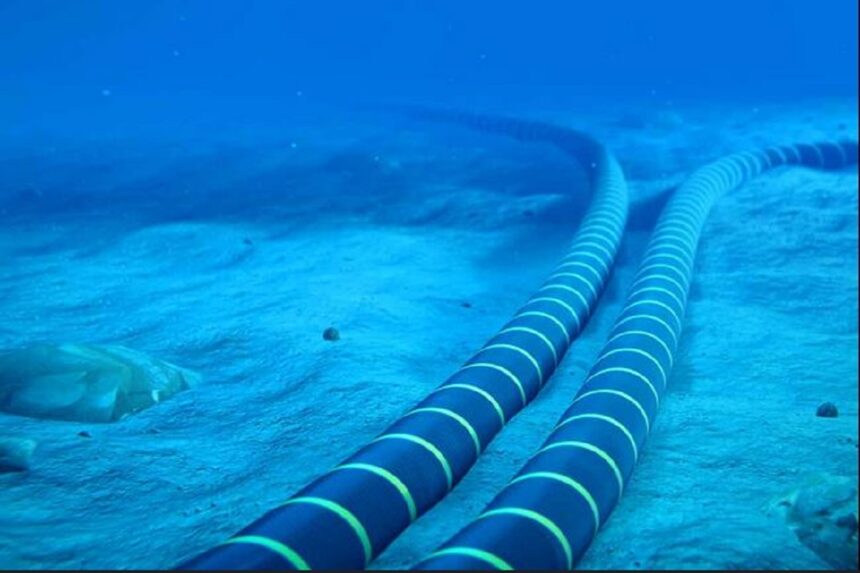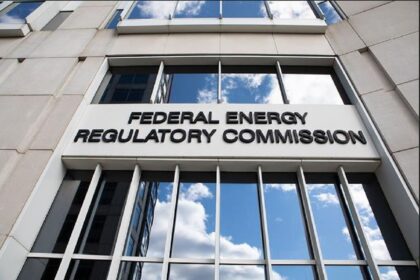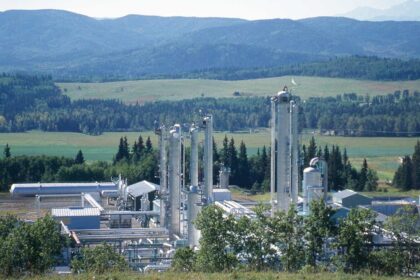The Greenlink Interconnector, a vital subsea electricity cable linking the UK and Ireland, has successfully exchanged power for the first time. After three years of construction, this crucial energy infrastructure project is set to enhance the energy security of both nations. This milestone marks the beginning of a new era of energy connectivity between the two countries, offering a reliable means of exchanging electricity.
Greenlink Interconnector Overview
The Significance of the Greenlink Interconnector
The Greenlink Interconnector is a subsea and underground power cable with a nominal capacity of 500MW, designed to bridge the gap between Ireland’s and the UK’s electricity grids. By connecting EirGrid’s Great Island substation in County Wexford, Ireland, to National Grid’s Pembroke substation in Pembrokeshire, Wales, the interconnector provides a crucial link for energy exchange.
The cable spans approximately 190 kilometers (118 miles) across the sea, making it one of the most ambitious infrastructure projects in recent times. The Greenlink project not only facilitates the exchange of electricity between the two countries but also supports the integration of low-carbon energy sources, such as wind and solar, into the grid.
Designed and Constructed by Industry Leaders
Siemens Energy designed and built the substations at both ends of the interconnector. The subsea High Voltage Direct Current (HVDC) cable itself was designed and constructed by Sumitomo Electric, a leading global provider of energy solutions. These high-quality, innovative designs ensure the Greenlink Interconnector is efficient, reliable, and capable of meeting the energy demands of both countries.
Key Milestones and Upcoming Commissioning
The Initial Power Exchange
The successful exchange of electricity between the UK and Ireland via the Greenlink Interconnector is a significant achievement for the project. This initial power transfer paves the way for further tests, with the interconnector expected to be fully commissioned in early 2025. The exchange of power marks a critical first step in the journey toward full operational capacity.
Future Plans and Operational Timeline
Greenlink Interconnector Limited, the entity behind the project, expects the interconnector to enter full operation in the coming months. While further testing is necessary, the initial power exchange signals that the interconnector will be a reliable addition to the grid. Once fully operational, it will contribute significantly to both nations’ energy security.
Energy Security: A Critical Advantage for Both Countries
Enhancing UK and Ireland’s Energy Independence
The Greenlink Interconnector is designed to enhance the energy security of both the UK and Ireland by providing a reliable means of electricity exchange. This connection will enable Ireland to access electricity from the UK’s grid when demand peaks, and vice versa. By establishing this interconnection, both countries can balance electricity supply and demand more effectively, particularly during periods of high consumption or supply disruptions.
Facilitating the Integration of Low-Carbon Energy Sources
One of the primary objectives of the Greenlink Interconnector is to facilitate the integration of low-carbon energy sources into both the UK and Ireland’s electricity grids. With the growing reliance on renewable energy, such as wind and solar power, this interconnector offers a way to stabilize the grid and mitigate potential volatility from renewable generation.
In addition, it will enable the export of renewable energy from Ireland to the UK, particularly wind energy, which plays a significant role in Ireland’s energy mix. This export capacity reduces energy wastage caused by grid constraints, ensuring that excess renewable energy is not lost.
The Role of Greenlink in Ireland’s Energy Future
Addressing Ireland’s Energy Demands Amid Data Center Growth
Ireland is facing increasing energy demand, particularly from its expanding data center sector. In 2023, data centers accounted for more than 21% of Ireland’s total electricity consumption, a dramatic increase from just 5% in 2015. This surge in demand has led to concerns about the country’s ability to meet its energy needs while continuing to support its growing digital economy.
To manage this rising demand, Ireland has placed a temporary moratorium on new data centers in Dublin, effective until 2028. This moratorium is intended to help the grid catch up with the increasing electricity consumption, but it also raises concerns about Ireland’s ability to maintain its status as a hub for data centers in Europe. The Greenlink Interconnector will help address some of these energy demands by enabling more efficient power exchange between the UK and Ireland, thus alleviating some of the pressure on the domestic grid.
Ireland’s Push Toward Renewable Energy
As part of its broader energy strategy, Ireland is heavily investing in renewable energy projects. The government aims to generate 80% of its power from renewable sources by 2030. However, the country’s ability to achieve this ambitious goal hinges on modernizing its grid infrastructure. EirGrid has estimated that at least €3 billion ($3.1 billion) in investment is needed to update the grid and accommodate new renewable energy sources.
The Greenlink Interconnector plays a critical role in this transition by enabling Ireland to export excess renewable energy, particularly from wind power, to neighboring countries. This will reduce the loss of energy due to grid limitations and support the country’s efforts to meet its renewable energy targets.
The Economic and Environmental Benefits of the Greenlink Interconnector
Supporting the European Green Deal
The Greenlink Interconnector aligns with the European Union’s Green Deal, which aims to make Europe the first climate-neutral continent by 2050. By providing a more flexible and efficient means of sharing renewable energy, the interconnector will help both Ireland and the UK meet their sustainability goals. It will also enable both nations to reduce their carbon emissions and enhance their renewable energy capacities.
A Model for Future Infrastructure Projects
As Europe’s first privately funded interconnector, the Greenlink project is an example of how private sector investment can help address critical energy infrastructure challenges. The project reached financial close in March 2022, demonstrating the potential for innovative financing models in the energy sector. The success of the Greenlink Interconnector may inspire similar projects in other regions, helping to create a more interconnected and sustainable European energy market.
Frequently Asked Questions
1. What is the Greenlink Interconnector?
The Greenlink Interconnector is a subsea and underground electricity cable that connects the UK and Ireland, facilitating the exchange of electricity between the two countries.
2. How long is the Greenlink Interconnector cable?
The Greenlink Interconnector cable is approximately 190 kilometers (118 miles) long, stretching from Ireland’s Great Island substation to the UK’s Pembroke substation.
3. What is the capacity of the Greenlink Interconnector?
The Greenlink Interconnector has a nominal capacity of 500MW, enabling the efficient exchange of electricity between the UK and Ireland.
4. How will the Greenlink Interconnector help Ireland’s energy sector?
The interconnector will reduce grid congestion, help Ireland export excess renewable energy, and support the country’s renewable energy goals.
5. When will the Greenlink Interconnector be fully operational?
The Greenlink Interconnector is expected to enter full operation in early 2025, after further testing and commissioning.



















